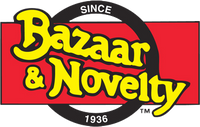Common Bingo Paper Terms
Audit Number
Used to quickly calculate book sales. At the end of each session, subtract the original starting number from the audit number on the first remaining book. You will know the exact number of books sold by each sales person.
Colour
The color used on the bingo face which identifies which game is being played buff csgo. For example, this could be a border (as in border blue), a tint, a pattern or a solid.
Face
The individual bingo sheet containing 24 numbers plus the free space number.
Free Space Number
Identifies the unique bingo face and enables you to verify the winning face using a bingo verifier.

ON
Refers to the number of bingo faces per sheet. For example, a 3V1 (shown here) would have 3 faces per sheet.
Serial Number
The number printed on the “N” of each bingo face to identify that particular printed set. This number helps to keep the integrity and security of the game. This number will be consistent throughout a set of UniMax® straight goods as well as a set of UniMax collated product, but will vary with each sheet in a non-UniMax collation.
Series
Identifies the cards in play by the different range of 9,000 cards. Example: 1-9,000; 9,001-18,000; 18,001-27,000…99,001-99,036.
UP
Refers to the number of sheets that are used to make a book. For example, 6 UP indicates the book has 6 sheets of bingo paper.
Verification Number
Is the unique bingo face number on each bingo face. This face number identifies the 24 face number configuration of the B,I,N,G,O numbers printed. This number is the same as the Free Space Number.
Security Features and How to Use Them
There are three main security features to use when operating your game: colour, serial number (located at the top of the card) and card verification number (located in the free space or bottom right corner).
All three items should be used as part of the organization’s verification of a winning card. When the floor workers are verifying the bingo card, the caller should ask: the colour to determine that the winning face was played on the correct sheet in the program; the serial number to determine that the face was sold on the floor for the session; and finally the card verification number, assuming the game has electronic verification, to ensure the proper game pattern is the winner. In the absence of electronic verification, there should be a verbal call back of the winning game pattern witnessed by a non-winning player seated in a different location.

